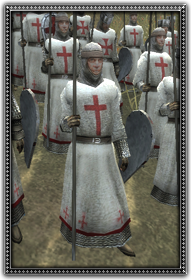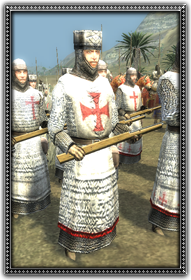

If you are using Maxthon or Brave as a browser, or have installed the Ghostery add-on, you should know that these programs send extra traffic to our servers for every page on the site that you browse.The most common causes of this issue are: PS: I appologize if my post is rambling, but it is late by me and I am very tired.Your IP address has been temporarily blocked due to a large number of HTTP requests.
#MEDIEVAL TOTAL WAR 1 KNIGHT TEMPLARS PC#
I am also a gamer and it never ceases to amaze me that, at a fundamental level, almost every strategy game I have ever played on the PC is just an overcomplication of chess! Of course, as someone who has played the game rather regularly for the last two decades or so (with my rating getting worse not better over that period ) I have always been fascinated by its ability to distill the timeless military wisdom of the ages down to their essentials, despite its lack of a FOW (Fog of War), and the heavy abstraction of the combat. Many dismiss chess as being so hopelessly abstract that it has no validity to real world military tactics. The "realism" of chess is a topic I have argued, often at length, with "grognards" (i.e., hardcore wargamers). Sorry I just saw your post now! Thanks for the response! And, yes, I agree with your observations concerning both chess and the painting. my ADD kicked into overdrive when I saw that painting!

Maybe I'll find a way to bring more attention to this topic because I love it! And to think, it all started when I went to the wikipedia article for chess, wondering about the historical symbolism of the pieces. It saddens me that this thread hasn't received much attention over 6 years but I can tell you that it interested me enough to go on this long train of thought about how chess is tied to realistic battlefield maneuvers and tactics. In actuality, the name "bishop" comes from a long line of names which loosely translated to "runner" or "messenger". Before I looked it up, I assumed the bishop was supposed to represent some supernatural mage or cleric. After an elaborate and educational trip to wikipedia, I find that the pieces are not only vastly different to what they were over a thousand years ago, but also misnamed in some cases. The actual history of this game is fascinating, not only in its evolution but in its attempt at realism. The queen was originally only able to move one square at a time diagonally, meaning she was even less mobile than the king himself. The rooks and bishops could use more long-range attacks (think archers). Using chess to analyze the battlefield tactics in medieval warfare (definitely thinking Lord of the Rings, Game of Thrones, and Medieval: Total War as examples), you can tell that the knights liked to stick together for more offensive cavalry charges. Therefore, either I'm analyzing this too deeply, or the painting was symbolic in the concept of "united we stand, divided we fall". Also, now that the pieces have split up, we can see that the bishop on A6 is in danger.

As the winning player is probably more tactically adept, you can see that his bishops are also working near each other, or were doing so until they split up. Both the knights and the rooks are within one square of each other. Despite the realism or lack-thereof, it looks like they enjoyed using each of their minor pieces in tandem. I have no idea where else you could find information about the history of this painting (Google is your friend), but I find the positioning of the pieces alone fascinating.


 0 kommentar(er)
0 kommentar(er)
